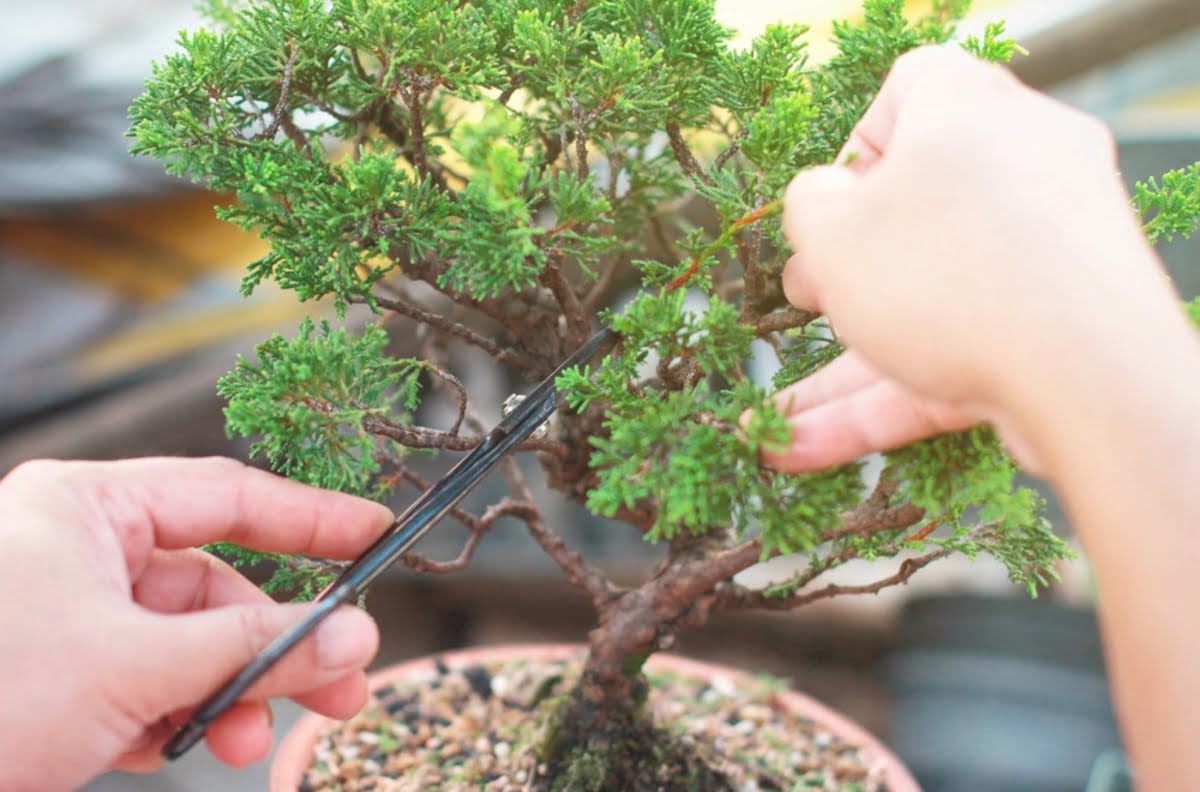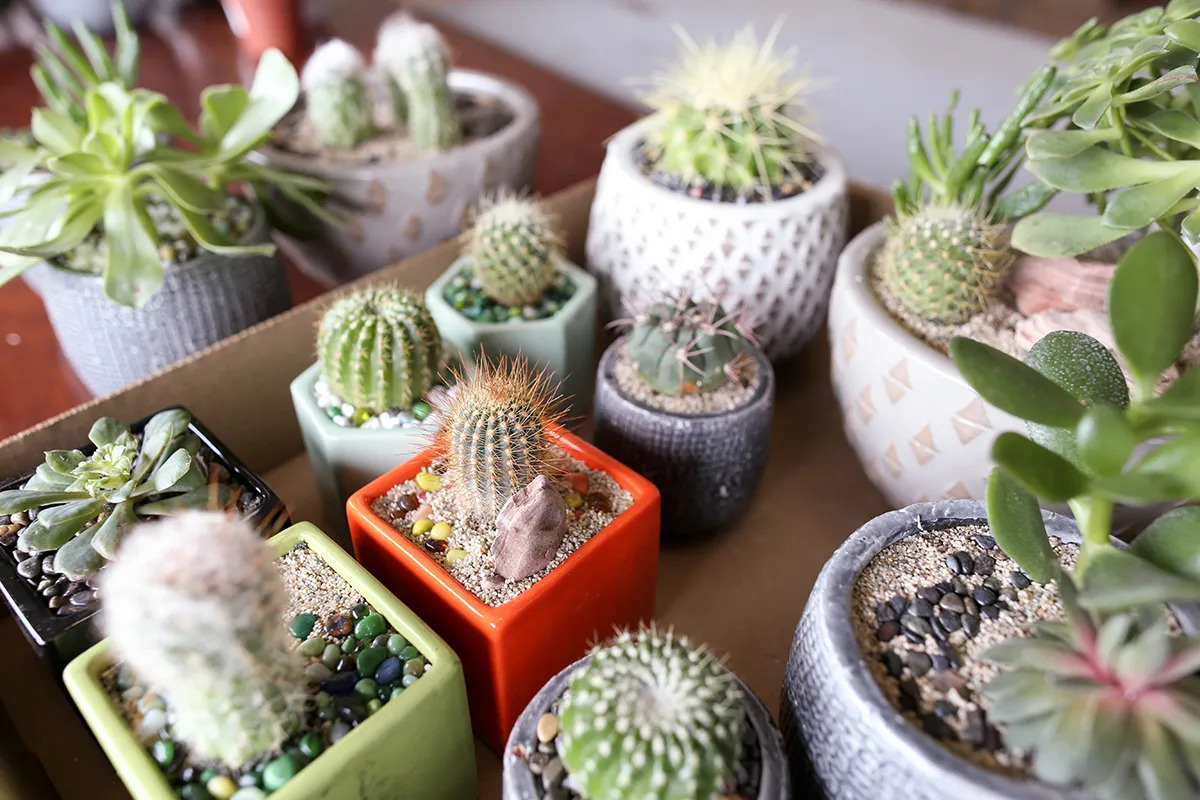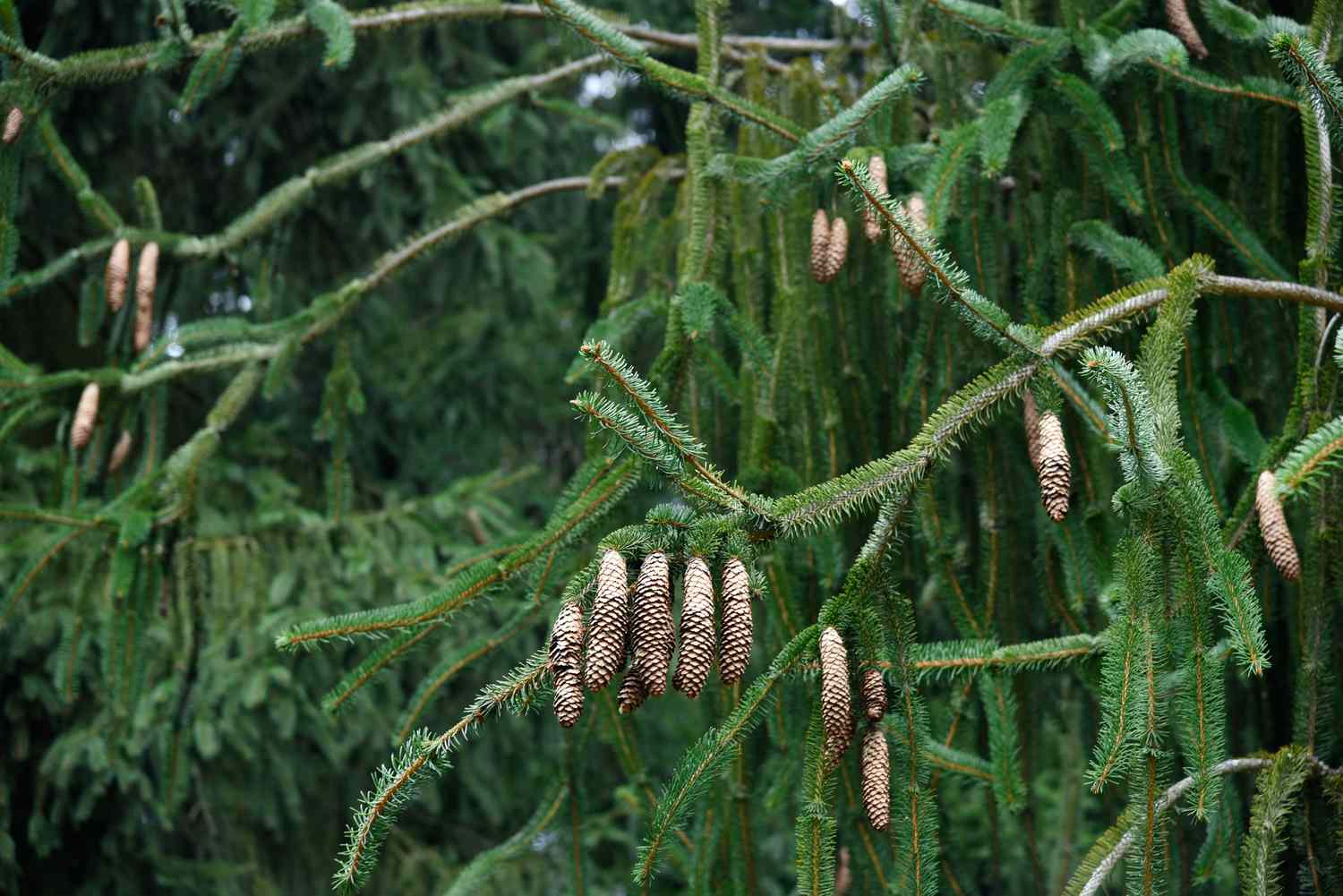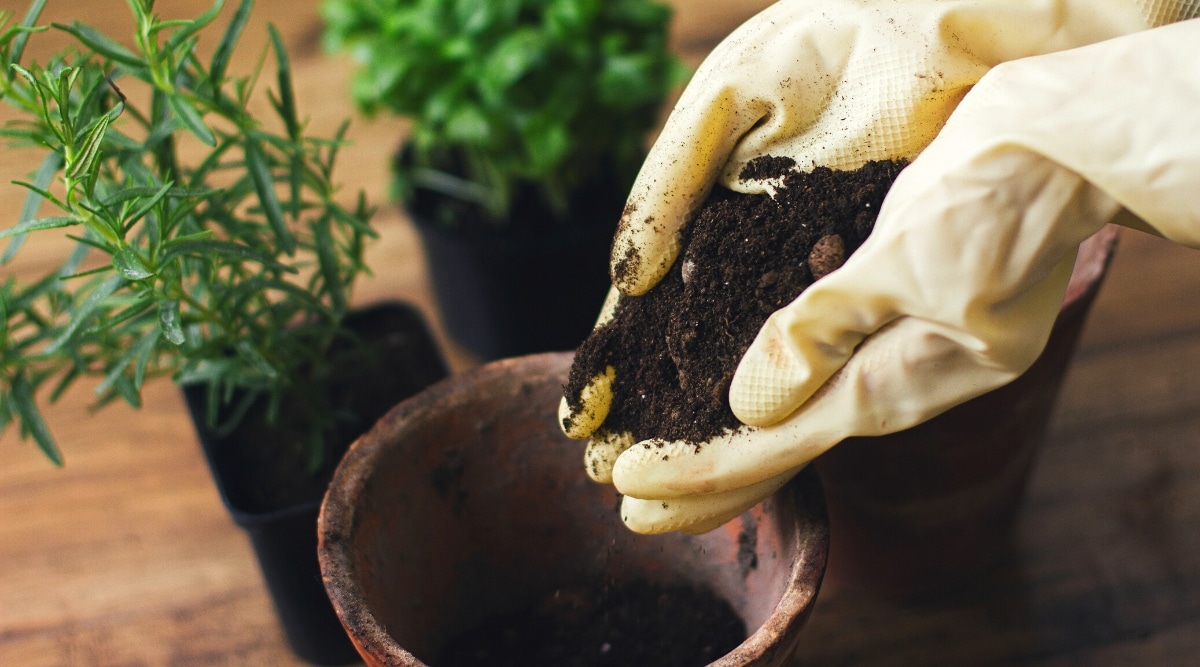Home>Types of Gardening>Ornamental Gardening>When To Repot Spruce Bonsai


Ornamental Gardening
When To Repot Spruce Bonsai
Modified: February 9, 2024
Discover the best time to repot your spruce bonsai tree for optimal growth and health. Expert tips and advice for ornamental gardening enthusiasts.
(Many of the links in this article redirect to a specific reviewed product. Your purchase of these products through affiliate links helps to generate commission for Chicagolandgardening.com, at no extra cost. Learn more)
Table of Contents
Introduction
Welcome to the magical world of ornamental gardening! If you have a passion for plants and the desire to create a visually stunning and captivating garden, then ornamental gardening is the perfect endeavor for you. One aspect of ornamental gardening that has gained immense popularity is spruce bonsai. These miniature trees, meticulously pruned and trained, can bring a sense of tranquility and beauty to any space.
However, like any living being, spruce bonsai trees require proper care and maintenance to thrive. One essential aspect of caring for a spruce bonsai is knowing when to repot it. Repotting is a crucial process that ensures the health and vitality of the bonsai. By repotting your spruce bonsai at the right time, you can promote root growth, improve nutrient absorption, and enhance overall tree health.
In this article, we will delve into the fascinating world of spruce bonsai repotting. We will explore the signs that indicate when repotting is necessary, as well as the best time to undertake this delicate task. Additionally, we will guide you through the steps involved in repotting your spruce bonsai and provide valuable aftercare tips to ensure its successful transition.
So, whether you are a beginner or an experienced ornamental gardener, get ready to dive into the world of spruce bonsai repotting and unlock the secrets to maintaining a healthy and vibrant blue ribbon-worthy bonsai.
Understanding Spruce Bonsai
Spruce bonsai, also known as Picea, is a popular choice among bonsai enthusiasts due to its elegant and distinctive appearance. These miniature trees are characterized by their needle-like leaves, compact growth habits, and the ability to withstand cold climates. Spruce bonsai trees can bring a sense of tranquility and beauty to any indoor or outdoor space, making them a sought-after addition to any ornamental garden.
There are several species of spruce used for bonsai cultivation, including the Colorado spruce (Picea pungens) and the Japanese spruce (Picea jezoensis). Each species has its own unique characteristics, but they all share the same fundamental requirements when it comes to care and maintenance.
When it comes to spruce bonsai care, providing the right growing conditions is crucial for its overall health and vitality. Spruce bonsai thrive in cool to cold climates and prefer a location that receives ample sunlight. While they can tolerate some shade, it is essential to provide them with enough light to support healthy growth.
Another important factor to consider when caring for spruce bonsai is maintaining proper moisture levels. These trees prefer slightly moist soil conditions and should be watered regularly, especially during the warmer months. However, it is essential to avoid overwatering, as excessive moisture can lead to root rot and other issues.
In terms of pruning, spruce bonsai should be trimmed and shaped regularly to maintain their desired form. This pruning helps to promote new growth and enhances the overall aesthetics of the bonsai. Additionally, wiring can be used to shape the branches and create a more visually appealing structure.
Understanding the unique characteristics and care requirements of your spruce bonsai is essential for its long-term health and success. By providing the right growing conditions, regular pruning, and proper watering, you can enjoy a beautiful and thriving spruce bonsai in your ornamental garden.
Signs that Your Spruce Bonsai Needs Repotting
Repotting a spruce bonsai is a crucial aspect of its care and maintenance. Knowing when to repot your bonsai is essential for promoting healthy root growth and maintaining the overall health and vitality of the tree. While there is no set timeframe for repotting a spruce bonsai, there are several signs to look out for that indicate it may be time for a repotting.
- Root Bound: One of the primary signs that your spruce bonsai needs repotting is when it becomes root bound. This occurs when the roots have grown densely and begin to encircle the pot. You may observe a dense mass of roots filling up the container, restricting proper water drainage and nutrient absorption.
- Stunted Growth: If your spruce bonsai is exhibiting stunted or slow growth, even with proper care and maintenance, it may be an indication that the root system has become restricted and needs more space to grow. Repotting allows the roots to expand, providing the tree with the necessary nutrients and oxygen for healthy development.
- Poor Water Retention: When you water your spruce bonsai, and the water quickly flows out of the drainage holes without being absorbed by the soil, it may be a sign that the root system is densely packed and unable to retain moisture effectively. Repotting can help improve the water-holding capacity of the soil, ensuring adequate hydration for the bonsai.
- Excessive Weeds or Moss: If you notice an abundance of weeds or moss growing on the surface of the soil, it may indicate that the potting mix has become compacted and requires repotting. Weeds or moss can indicate poor drainage and may lead to root rot if left unaddressed.
- Loss of Foliage Color or Vigor: When a spruce bonsai shows a decline in foliage color or overall vigor, it may be an indication of nutrient deficiencies or root congestion. Repotting can provide the bonsai with fresh nutrients and room for the roots to grow, revitalizing the tree and restoring its vibrancy.
It is important to note that repotting should be done with caution and only when necessary. While these signs may indicate the need for repotting, it is essential to assess each bonsai individually and consider factors such as the tree’s age, health, and overall growth patterns. Consulting with an experienced bonsai enthusiast or horticulturist can provide valuable guidance in determining the right time to repot your spruce bonsai.
Best Time to Repot Spruce Bonsai
The timing of repotting plays a crucial role in the success and overall health of your spruce bonsai. It is important to choose the right time to ensure minimal stress on the tree and to promote optimal root growth. While certain factors, such as the specific species and location, may influence the exact timing, there are general guidelines to follow when determining the best time to repot your spruce bonsai.
Spring is typically considered the ideal season for repotting spruce bonsai. During this time, the tree is entering an active growth phase, which means it is better equipped to recover and adjust to the repotting process. Repotting in spring allows the spruce bonsai to establish its roots in the new soil and adjust to any necessary changes, such as root pruning or pot size adjustment.
It is important to keep in mind that the timing may vary depending on your specific region and climate. In colder regions, where winter temperatures are more severe, it is advisable to wait until the weather becomes more stable and consistent before repotting. This ensures that the tree will not be subjected to extreme temperature fluctuations during its recovery period.
Additionally, it is essential to consider the age and health of your spruce bonsai when determining the best time for repotting. Younger trees with more vigorous growth may benefit from more frequent repotting, while older and more established trees may require repotting at longer intervals.
Observing the growth patterns of your spruce bonsai is also crucial in determining the ideal timing. If you notice that the tree’s growth has slowed, it may be a sign that repotting is necessary to provide fresh soil and optimize root growth and nutrient absorption.
Remember, it is important to avoid repotting during the summer months when the temperatures are high, as this can put additional stress on the tree. Similarly, repotting during winter, when the tree is in a dormant state, should be avoided as well.
By timing the repotting process appropriately, you can ensure the best chances of success and maximize the health and vitality of your spruce bonsai.
Steps to Repot Spruce Bonsai
Repotting a spruce bonsai is a delicate process that requires careful attention and precision. Following the proper steps will help ensure the health and vitality of your bonsai. Here is a step-by-step guide to effectively repotting your spruce bonsai:
- Prepare your tools and materials: Gather all the necessary tools and materials, including a suitable bonsai pot, fresh bonsai soil mix, pruning shears, wire cutters, root rake or comb, and a chopstick or bamboo skewer.
- Carefully remove the bonsai from its pot: Gently tap the sides of the pot to loosen the root ball, and carefully lift the bonsai out of its pot, ensuring minimal damage to the roots.
- Inspect and prune the roots: Examine the roots for any signs of damage, disease, or excessive growth. Trim any dead or unhealthy roots using clean, sterilized pruning shears. Additionally, consider using a root rake or comb to gently untangle and separate densely packed roots.
- Remove old soil: Gently remove the old soil from the root ball using your fingers or a chopstick, being careful not to damage the fragile roots. Remove any debris or dead roots to promote healthy growth.
- Prepare the new pot: Select a bonsai pot that is slightly larger than the current pot to allow for future root growth. Place a layer of fresh bonsai soil mix at the bottom of the pot and position the bonsai in the desired position.
- Position the bonsai in the pot: Carefully arrange the roots in the pot, spreading them out evenly to encourage proper growth. Ensure that the bonsai is positioned slightly off-center to create an aesthetically pleasing composition.
- Fill the pot with fresh soil: Gradually fill the pot with the bonsai soil mix, working the soil around the roots and ensuring there are no air pockets. Gently tap the pot to settle the soil and make any necessary adjustments to the tree’s position.
- Water and place in appropriate light: Thoroughly water the bonsai to help the soil settle and provide hydration to the roots. Place the repotted bonsai in a suitable location where it can receive the right amount of sunlight and optimal growing conditions.
It is important to note that not all bonsai trees require repotting every year, so be sure to assess the unique needs of your spruce bonsai and consider factors such as its age, growth patterns, and overall health. Remember, repotting is a process that should be done with care and caution to promote the ongoing health and vitality of your spruce bonsai.
Aftercare Tips for Repotted Spruce Bonsai
After repotting your spruce bonsai, providing proper aftercare is crucial to ensure its successful transition and promote healthy growth. Here are some essential aftercare tips to follow:
- Monitor watering: Proper watering is essential during the post-repotting period. Be mindful not to overwater or underwater the bonsai. Monitor the moisture levels in the soil and adjust your watering schedule accordingly. Remember, consistency is key.
- Provide shade: To reduce stress on the freshly repotted spruce bonsai, it is advisable to provide some shade for the first few weeks. Shield the bonsai from direct sunlight to prevent excessive drying out or leaf burn.
- Avoid excessive fertilization: While fertilization is important for bonsai health, it is best to refrain from applying fertilizer immediately after repotting. Wait for a few weeks to allow the roots to establish themselves before resuming a regular fertilization routine.
- Protect from extreme temperatures: Avoid exposing the repotted spruce bonsai to extreme temperatures, whether it’s freezing cold or scorching heat. Extremes in temperature can cause stress and hinder the recovery process.
- Monitor for pests and diseases: Regularly inspect your spruce bonsai for any signs of pests or diseases. Treat any issues promptly to prevent them from spreading and causing further damage to the bonsai.
- Continue regular care and maintenance: Once your spruce bonsai has acclimated to its new pot, resume your regular care routine. This includes regular pruning, wiring if needed, and maintaining a suitable environment with proper lighting, temperature, and humidity levels.
- Be patient: It takes time for your repotted spruce bonsai to fully recover and resume active growth. Be patient and avoid making any drastic changes or interventions during this period. Give your bonsai the time it needs to settle in and regain its strength.
Remember, each bonsai is unique, and it is important to cater to its specific needs. Observing your spruce bonsai closely during the aftercare period will allow you to identify any potential issues and make adjustments accordingly. With proper aftercare, your repotted spruce bonsai will thrive and continue to bring beauty and tranquility to your ornamental garden for years to come.
Conclusion
Congratulations! You have now embarked on the journey of understanding and repotting your spruce bonsai. By recognizing the signs that indicate when repotting is needed, knowing the best time to undertake the process, and following the proper steps and aftercare tips, you are equipped to maintain the health and vitality of your miniature tree.
A well-maintained spruce bonsai can bring beauty, serenity, and a touch of nature to any space. Whether you are a beginner or an experienced ornamental gardener, the art of spruce bonsai cultivation offers endless opportunities for creativity and personal expression. Through careful pruning, shaping, and repotting, you will witness the growth and transformation of your bonsai, just like a living work of art.
Remember to observe your spruce bonsai closely, learn from its responses, and adapt your care routine accordingly. Each bonsai is unique, and the more you understand and connect with your tree, the more rewarding the journey will be.
So, continue to cultivate your spruce bonsai with love and dedication. Enjoy the process of nurturing nature and creating a picturesque bonsai garden that will captivate the hearts and admiration of others.
Happy repotting and may your spruce bonsai flourish for years to come!






